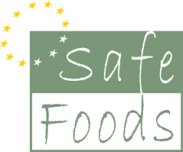
Quantitative Risk
Quantitative Risk Assessment Research in SAFE FOODS: Study of Combined Exposure and Pan-European Modelling of Exposure and Integrated Risk Analysis.
Dear trainee,
Welcome to this E-learning module on the study of combined exposure to food contaminants, Pan-European modelling of dietary exposure and integrated risk analysis. The information gathered in this module is based on the research activities, results and poster material generated by the SAFE FOODS experts from Workpackage 3.
The aims of this learning module are the following:
- To give an introduction into the basic concepts of food safety risk assessment and food contaminants
- To explain the importance of the creation of an electronic platform of food consumption and residue databases
- To present a new approach for the integration of exposure and effect
- To show the relevance of a multi-chemical dietary exposure assessment.
We hope that this E-learning module will provide you with comprehensive background information on quantitative risk assessment research. At the same time we wish you a motivating learning experience and hope that it may trigger your interest to explore this interesting discipline into more detail.
Content
1. Introduction
- 1.1. Current risk assessment practices
- 1.1.1. What is Risk Analysis related to food contaminants?
- 1.1.2. Risk assessment
- 1.1.3. Risk assessment limitations
- 1.2. Dietary exposure assessment
- 1.2.1. Acute exposure
- 1.2.2. Chronic exposure
- 1.2.3. Comparison with reference value
- 1.2.4. An example of an acute dietary risk assessment
2. SAFE FOODS research
- 2.1. Use of non-harmonised procedures and databases
- 2.2. Use of the NOAEL to quantify risks
- 2.3. Cumulative exposure
- 2.4. Uncertainty analyses
- 2.5 Practical implications
3. Food contaminants
- 3.1. Some examples
- 3.1.1. Pesticides
- 3.1.2. Environmental contaminants
- 3.1.2.1. Dioxins
- 3.1.2.2. Heavy metals
- 3.1.2.3. Mycotoxins
- 3.1.3. Emerging food contaminants
- 3.2. International standards, data collection and legislation
- 3.2.1. The European Chemical Agency (ECHA)
- 3.2.1.1. REACH
